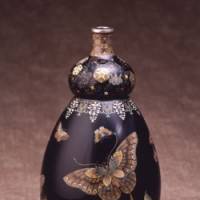During the Meiji Era (1868-1912) a boom in cloisonne production led to the creation of many high-quality works. As Japan opened up its ports to trade, such pieces became particularly popular abroad.
Bought by international collectors at high prices, most of the cloisonne created during the Meiji Era was therefore exported. Only a very few Japanese had the opportunity to buy such works. Among them was the Emperor Meiji and his Imperial Household Agency, which ordered them as gifts for royal and presidential visitors to Japan.
Masayuki Murata, director of Kiyomizu Sannenzaka Museum, first saw Meiji Era cloisonne works in New York some 20 years ago. He was mesmerized by the bird and flower designs set in bright blues, greens and oranges, made all the more vibrant against pitch-black backgrounds.
On display are some 80 examples of Meiji Era cloisonne, including vases and incense-burners by such masters as Yasuyuki Namikawa and Sosuke Namikawa; till Feb. 19.
Kiyomizu Sannenzaka Museum; (075) 532-4270; 3-337-1 Kiyomizu, Higashiyama-ku, Kyoto; take city bus from JR Kyoto Station and get off at Kiyomizumichi bus stop. 7-min. walk from the bus stop. 10 a.m.-5 p.m. ¥500. Closed Mon., Tues.; open holidays. www.sannenzaka-museum.co.jp.

















With your current subscription plan you can comment on stories. However, before writing your first comment, please create a display name in the Profile section of your subscriber account page.